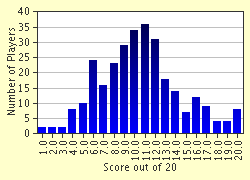Quiz Answer Key and Fun Facts
1. This English astronomer paid for his observatory by selling old (perhaps unusable) gunpowder to the French. Who was he?
2. Who first used paper in about A.D. 105?
3. What extremely famous inventor was known as 'The Wizard of Menlo Park'?
4. Who invented the first simple barometer in 1643?
5. Who took the earliest known photograph?
6. Who discovered X-rays?
7. Who used a screw to pump water from the hold of a ship?
8. Who believed that the Moon must surely be inhabited?
9. Who built a steam-powered airplane caled the Eole?
10. Who built the first successful helicopter?
11. Who first worked out how long a year is?
12. Who first attempted to measure the speed of light?
13. Who invented the flushing toilet that caught on?
14. Who discovered hydrogen?
15. Who designed the first computer?
16. Who was the first woman to travel into space?
17. Who was the astronomer that invented a diving bell?
18. Who invented the Celsius scale as a way of measuring temperature?
19. Who did the most to found modern geology?
20. Who caught a terrible cold while carrying out an experiment in food preservation?
Source: Author
GeniusBoy
This quiz was reviewed by FunTrivia editor
bloomsby before going online.
Any errors found in FunTrivia content are routinely corrected through our feedback system.


